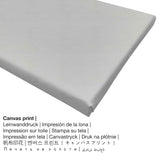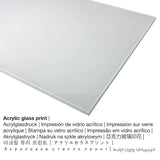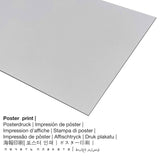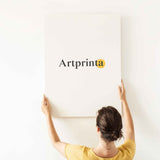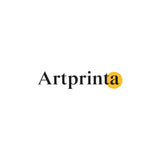Anders Zorn, 1890 - The Little Brewery - ọmarịcha nka
Ụtụ gụnyere. Mbupu gbakọrọ na ndenye ọpụpụ.
Nkọwa akụkọ izugbe
Ihe osise ihe karịrị afọ 130 The Little Brewery mere site Anders Zörn n’afọ 1890. The 130 years old original version of the piece of art has the following size: Ogologo: 47,5 cm (18,7 ″); Obosara: 78 cm (30,7 ″) Ekebere: Elu: 67 cm (26,3 ″); Obosara: 97 cm (38,1 ″); Omimi: 7 cm (2,7 ″). Nke a mpempe nka bụ nke dijitalụ art collection nke National Museum nke Stockholm. Nke a na-arụ ọrụ nka, nke bụ nke ngalaba ọha a na-enye ya site n'ikike nke Nationalmuseum Stockholm na Wikimedia Commons.The creditline of the artpiece is the following: . What is more, the alignment of the digital reproduction is landscape with a ratio of 3 : 2, meaning that ogologo bụ 50% ogologo karịa obosara. The photographer, engraver, painter, sculptor, watercolourist Anders Zorn was an artist from Sweden, whose style was primarily Impressionism. The European artist lived for 60 years, born in 1860 na Mora, Dalarna, Sweden ma nwụọ na 1920 na Mora, Dalarna, Sweden.
Nye iwu ihe ngwaahịa ị họọrọ
In the product dropdown lists you can choose a material and a sizeaccording to your individual preferences. You can pick your favorite size and material between the subsequent preferences:
- Mpempe akwụkwọ ederede (akwa akwa akwa): The Artprinta poster print is a UV printed sheet of canvas with a fine finish on the surface. Please keep in mind, that depending on the size of the canvas poster print we add a white margin between 2-6cm around the print, which facilitates the framing with your custom frame.
- Ihe odide acrylic glass: The print on acrylic glass, which is sometimes referenced as a print on plexiglass, changes the original into beautiful home decoration and forms a distinct alternative option to canvas and dibond prints. Your own replica of the artwork is being manufactured with the help of modern UV printing machines. With an acrylic glass art print contrasts as well as minor image details will be recognizeable because of the precise tonal gradation of the print. The plexiglass protects your selected art replica against light and heat for between 40-60 years.
- Mbipụta kanvas: The printed canvas, not to be confused with a real artwork painted on a canvas, is a digital replica applied onto cotton canvas fabric. A canvas makes a typical look of three-dimensionality. Further, a canvas print creates a charming and pleasant impression. Hanging your canvas print: Canvas prints are relatively low in weight, which implies that it is easy to hang up your Canvas print without the help of extra wall-mounts. Canvas prints are suitable for any kind of wall.
- Metal (aluminium debond mbipụta): Aluminium Dibond prints are prints on metal with an outstanding depth effect. The white and bright parts of the work of art shine with a silky gloss but without glow.
Ihe dị mkpa: We try our best in order to depict the art products in as much detail as possible and to display them visually in our shop. At the same time, the colors of the printing material and the print result can diverge to a certain extent from the representation on your screen. Depending on the screen settings and the quality of the surface, not all color pigments are printed 100% realistically. Bearing in mind that all art prints are processed and printed manually, there may also be minor differences in the exact position and the size of the motif.
Nkọwapụta ngwaahịa
| Bipụta ụdị ngwaahịa: | nka nka |
| Mmeputakwa: | dijitalụ mmeputakwa |
| Usoro mmepụta: | Mbipụta UV / dijitalụ |
| Ihe ngosi: | arụpụtara na Germany |
| Ụdị ngwaahịa: | mmepụta ihe na-achọ |
| Eji ngwaahịa a chọrọ: | mgbidi mgbidi, ụlọ mmepụta nka nka |
| Nhazi nke ihe nka: | usoro odida obodo |
| Njikwa oyiyi: | (ogologo: obosara) 3: 2 |
| Mmetụta akụkụ onyonyo: | ogologo bụ 50% ogologo karịa obosara |
| Nhọrọ akwa: | Mpempe akwụkwọ, akwụkwọ mmado (akwụkwọ kwaaji), mbipụta ọla (aluminium dibond), mbipụta iko acrylic (nwere ezigbo mkpuchi iko) |
| Nhọrọ nha nha mbipụta kanvas (akwa akwa na etiti ihe ndọtị): | 30x20cm - 12x8", 60x40cm - 24x16", 90x60cm - 35x24", 120x80cm - 47x31", 150x100cm - 59x39" |
| Mbipụta iko acrylic (nke nwere ezigbo mkpuchi iko): | 30x20cm - 12x8", 60x40cm - 24x16", 90x60cm - 35x24", 120x80cm - 47x31" |
| Ụdị akwụkwọ mmado (akwụkwọ kwaaji) dị iche iche: | 60x40cm - 24x16", 90x60cm - 35x24", 120x80cm - 47x31" |
| Ụdị mbipụta aluminom dibond: | 30x20cm - 12x8", 60x40cm - 24x16", 90x60cm - 35x24", 120x80cm - 47x31" |
| Nhazi nke nnomi nka: | adịghị |
Nkọwa nka ahaziri
| Aha nke ihe nka: | "The Little Brewery" |
| Nhazi: | sere |
| Okwu mkpokọta: | nkà nke oge a |
| oge: | 19th narị afọ |
| Emepụtara n'afọ: | 1890 |
| Afọ nka: | gbara afọ 130 |
| Akụkụ izizi nka: | Ogologo: 47,5 cm (18,7 ″); Obosara: 78 cm (30,7 ″) Ekebere: Elu: 67 cm (26,3 ″); Obosara: 97 cm (38,1 ″); Omimi: 7 cm (2,7 ″) |
| Ụlọ ihe ngosi nka / mkpokọta: | National Museum nke Stockholm |
| Ebe ngosi nka: | Stockholm, Obodo Stockholm, Sweden |
| Weebụsaịtị ihe ngosi nka: | National Museum nke Stockholm |
| Ụdị ikike nka: | ngalaba ọha |
| Site n'aka: | Nationalmuseum Stockholm na Wikimedia Commons |
Tebụl onye na-ese ihe
| Ihe nkiri: | Anders Zörn |
| Aha utu aha: | זורן אנדרס, T︠S︡orn Anders, a. zorn, Anders Zorn, Zorn Anders Lenard, Anders Leonard Zorn, Zorn Anders, Zorn, zorn anders, andreas zorn, Zorn Anders Leonard |
| okike onye nka: | nwoke |
| Obodo onye nka: | Swedish |
| Ọrụ nke onye na-ese ihe: | watercolourist, engraver, painter, sculptor, photographer |
| Obodo obibi: | Sweden |
| Nkewa onye nka: | omenkà nke oge a |
| styles: | Mmetụta |
| Afọ ọnwụ: | 60 afọ |
| Amụrụ n'afọ: | 1860 |
| Amụrụ na (ebe): | Mora, Dalarna, Sweden |
| Afọ nwụrụ: | 1920 |
| Obodo ọnwụ: | Mora, Dalarna, Sweden |
© nwebiisinka site na - www.artprinta.com (Artprinta)
General specifications by Nationalmuseum Stockholm (© - nke Nationalmuseum Stockholm - National Museum nke Stockholm)
English: In this interior from a brewery, women workers are bottling beer and corking the filled bottles. In the background, a supervisor is watching over their work. Women factory workers were not a new phenomenon in the era of Swedish industrialisation. Their work could be both heavy and hazardous, but Zorn’s painting can hardly be interpreted as social criticism. On the contrary, he seems to have been mostly interested in capturing the light, the humidity and their concentration as they worked. I den här interiören från ett bryggeri ser vi kvinnliga arbetare som tappar öl på flaska och försluter flaskorna med kork. I bakgrunden syns en förman som övervakar arbetet. Att kvinnor arbetade i industrin var något nytt i en tid då Sverige började industrialiseras. Arbetet kunde vara ett tungt och ohälsosamt, men Zorns målning ska knappast uppfattas som samhällskritik. Han tycks framför allt ha varit intresserad av att fånga ljuset, den fuktiga luften och det koncentrerade arbetet


